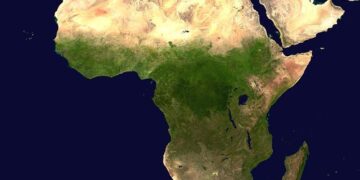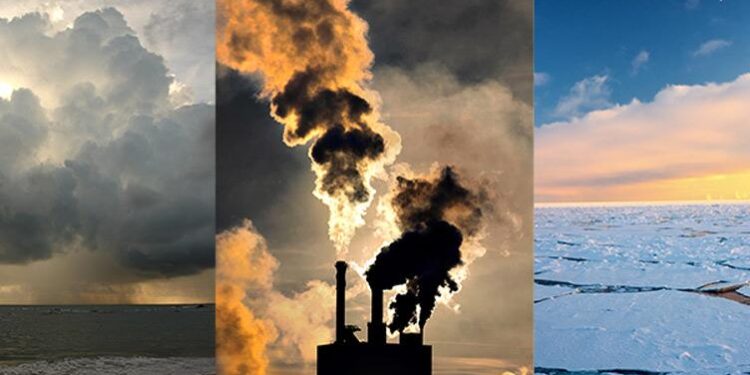As global temperatures continue to rise at an unprecedented rate, the world faces mounting challenges that threaten ecosystems, economies, and communities alike. In its latest report, Al Jazeera delves into the stark realities of a warming planet, exploring the causes, consequences, and urgent actions needed to address climate change. This comprehensive examination sheds light on how nations, industries, and individuals are grappling with the complexities of global warming, highlighting the critical choices that will shape our collective future.
Rising Temperatures and Their Impact on Global Ecosystems
Rising global temperatures are pushing ecosystems to their limits, disrupting delicate balances that have sustained biodiversity for millennia. Forests are experiencing more frequent and severe wildfires, while coral reefs face unprecedented bleaching events due to warmer seas. These disruptions threaten countless species with extinction and jeopardize the livelihoods of communities relying on natural resources. The ripple effects extend beyond the environment, affecting food security, water supplies, and global health.
Scientists highlight several key impacts of temperature increases on ecosystems:
- Altered migration patterns: Many animals are forced to move to cooler regions, impacting biodiversity hotspots irregularly.
- Phenological shifts: Changes in the timing of flowering, breeding, and hibernation disrupt species interactions.
- Loss of habitat: Melting ice caps and rising sea levels shrink critical habitats such as polar regions and coastal wetlands.
| Impact | Example | Consequences |
|---|---|---|
| Wildfires | Amazon Rainforest | Loss of carbon sink, species decline |
| Coral Bleaching | Great Barrier Reef | Disrupted marine food chains |
| Habitat Shrinkage | Arctic Tundra | Polar bear population decline |
Economic Consequences of Climate Change Across Regions
Climate change is reshaping the global economic landscape, but its impact is far from uniform. Developing nations, particularly those in sub-Saharan Africa and Southeast Asia, are disproportionately bearing the financial burden due to their heavy reliance on agriculture and limited adaptive capacity. Crop failures, water scarcity, and extreme weather events are driving up food prices and exacerbating poverty. In contrast, wealthier countries face costly infrastructure repairs, insurance losses, and disruptions to supply chains, highlighting a clear divide in economic resilience.
Key economic impacts identified across regions include:
- Sub-Saharan Africa: Declining agricultural output and increased food insecurity.
- Southeast Asia: Flooding and sea-level rise threatening urban centers and livelihoods.
- Europe: Rising energy costs and damage to historic infrastructure from extreme weather.
- North America: Growing expenditure on disaster relief and infrastructure resilience.
| Region | Estimated Annual Economic Loss | Primary Driver |
|---|---|---|
| Sub-Saharan Africa | $40 billion | Agricultural disruption |
| Southeast Asia | $50 billion | Coastal flooding |
| Europe | $30 billion | Infrastructure damage |
| North America | $60 billion | Natural disasters |
Strategies for Mitigation and Adaptation in a Warming World
Facing the escalating threats of climate change requires a dual approach that balances immediate action with long-term resilience. Mitigation efforts focus on reducing greenhouse gas emissions through a transition to renewable energy sources, enhancing energy efficiency, and preserving carbon sinks such as forests and wetlands. Governments worldwide are investing in green technologies and incentivizing sustainable practices to curb the pace of warming. For instance, scaling up solar and wind power, electrifying transport, and promoting circular economies can collectively reduce the carbon footprint and slow down global temperature rise.
Adaptation strategies are equally critical, aiming to safeguard communities by enhancing their ability to withstand and recover from climate impacts. This includes upgrading infrastructure to withstand extreme weather, improving water resource management, and implementing early warning systems for disasters. The table below illustrates some key adaptation measures and their areas of impact:
| Adaptation Measure | Primary Impact Area | Example |
|---|---|---|
| Flood-resistant infrastructure | Urban resilience | Elevated roads in coastal cities |
| Rainwater harvesting systems | Water security | Rural community reservoirs |
| Heat action plans | Public health | Early heatwave warnings |
- Policy integration: Combining climate goals with economic and social policies ensures comprehensive responses.
- Community engagement: Empowering local populations enhances adaptive capacity tailored to specific vulnerabilities.
- International cooperation: Climate change is a global challenge demanding unified mitigation and adaptation commitments.
Closing Remarks
As the planet continues to warm at an unprecedented rate, the urgency for collective global action has never been clearer. Al Jazeera’s exploration of “Global Warning: Our future in a warmer world” underscores the profound challenges and stark realities facing humanity. The window to mitigate the most devastating impacts of climate change is narrowing, demanding immediate policy shifts, innovation, and unwavering commitment from governments, businesses, and individuals alike. The future of our planet hinges on the decisions made today-choices that will determine not only the quality of life for generations to come but the very habitability of Earth itself.































